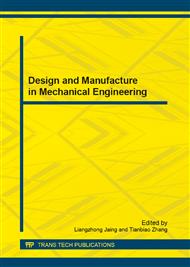p.304
p.310
p.316
p.324
p.330
p.336
p.341
p.345
p.351
Hydrodynamic and Noise Characteristics Analysis of a Sea Valve and its Optimization
Abstract:
The sea valve is a critical unit in the seawater pipelines onboard. Its mainly used to control and adjust the flux of seawater. In the practical use, the vibration and sound level of a kind of valve is proved to be too high to maintain the acoustic performance of ships.In this paper, the three-dimensional geometry and CFD model of a typical sea valve is established.Then the flow fields inside the valve, flow characteristics, drag reduction characteristics and noise characteristics were analyzed, as well as the fluid-solid coupling response between the flow field and the valve structure. Based on the analysis, two optimum schemes are proposed in order to improve the flow characteristics of the flow field and reduce vibration and noise level of this type of sea valves. The calculated results show that two optimum schemes both can improve the hydrodynamic and noise characteristics, and the scheme two is relatively better.
Info:
Periodical:
Pages:
330-335
Citation:
Online since:
September 2013
Authors:
Price:
Сopyright:
© 2013 Trans Tech Publications Ltd. All Rights Reserved
Share:
Citation:


